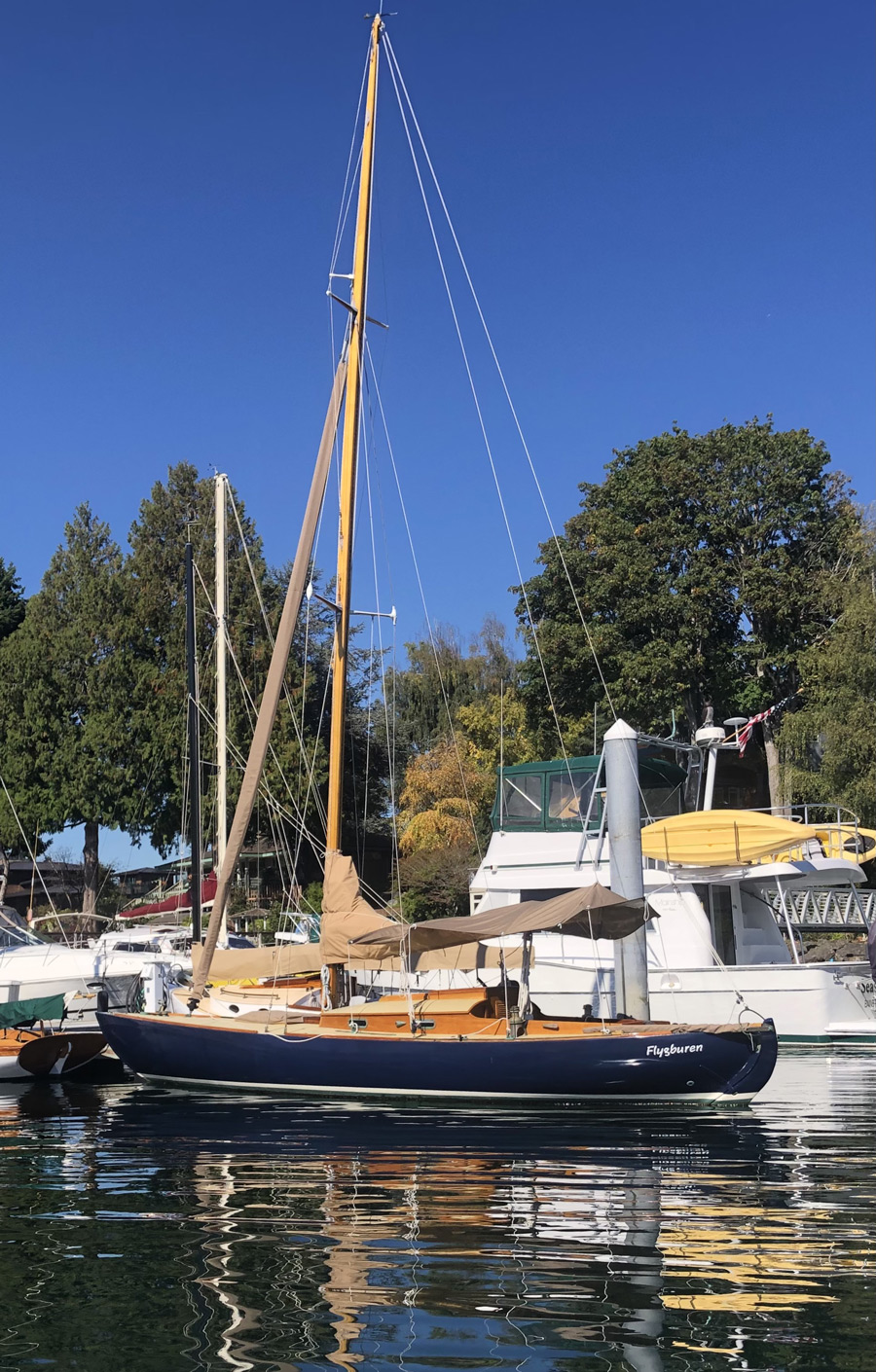All it took was standing in her cockpit.
Her mast was not stepped and she was supported by the static steel of boat stands rather than the undulating sea, but I could still sense the elegant movement and speed, Even perched there above the green lawn, her lines and proportions seemed to resonate the English translation of her Swedish name; “Airborne”
I bought her on the spot.
It was the spring of 2021 and I had been in the backyard of her prior owner, Mark, who had done a fastidious renovation of the boat just a year or two prior. The original boat had been built just East of Seattle by Richard and Andy McConkey in 1994 using original plans from the desk of Knud Reimers for his 20 square meters “Tumlaren”. While the hull of this boat is cold molded rather than planked, the execution of the design remains true to the original.
The Tumlaren was a design intended for racing on the deep water fjords and bays around Sweden in the 1930s, but the thoughtful design soon caught on in other places and there are clubs and regattas for these boat events today. Her narrow beam and high aspect rig are common among “skerry cruisers” and similar designs built for the northern waters. These elements give the boat speed by combining the relatively long waterline with the small sail area limit of 20 square meters required by the rules of the class. The tall mast and short-footed sails were intended to take advantage of higher wind speeds above the water in lighter airs and give the boat a distinctive profile with a headsail tack well aft of the bow. Although her low freeboard makes her vulnerable to heavy seas, her tumblehome hull shape, ballast ratio, and small cockpit help keep her stable and dry in demanding conditions. The fractional rig, equipped with both an adjustable backstay and running backstays provides for shaping her canvas to maximize any point of sail. Flygburen also benefits from the addition of a modern roller fuller as a convenience for single-handed headsail management.
Her most prominent limitation is that the cockpit and cabin are designed for racing and day sailing, providing little space for companions on the boat, although this may not be a drawback depending on your perspective. While many of these boats were built with little more than sail storage below deck, Flygburen sports beautifully finished and comfortable, if spartan, accommodations below deck.
While the technical details describe her capability, they do little to describe the elegant and thoughtful way the elements are combined in comforting proportions and an accessible, efficient layout. It is a true pleasure to sail, a willing partner on the water whether racing or just cruising.
She is no stranger to Port Townsend, having shown well in prior Wooden Boat Festivals under prior ownership and her most renovation has utilized custom bronze fittings, sails, and covers from the Port Townsend community of artisans and craftspeople.
I have truly enjoyed my first full season as her owner, sailing her on the waters around Bainbridge Island. I hope to continue the committed stewardship of this enchanting boat.
